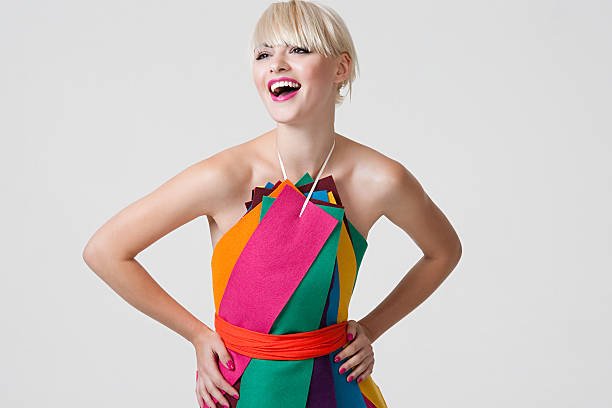
The festive wear for women combines fashion with ethnic traditions, resulting in various styles and statements. Every celebration outfit is a reflection of history, custom, and personal identity. Women worldwide wear intricately crafted clothes that reflect their culture’s festive spirit and tell a tale.
The colorful Indian saree is a hallmark of most Indian festivals. This garment has become a symbol of grace and adaptability in women’s fashion. The saree’s transformation from a draped garment to a canvas for digital designs and embellishments combines ancient tradition with modern invention. Designers use georgette, silk, chiffon, and elaborate embroidery techniques like zari, gota patti, and sequins to create stunning and unique designs.
With its T-shaped, straight-lined garments worn ankle-length, the Japanese kimono exudes precision and perfection. Kimono-wearing requires accurate wrapping of numerous parts around the body. Kimono selection for festivals depends on season, age, marital status, and event, making it a garment with significant cultural and aesthetic meaning.
Festival clothing in Africa generally features brightly colored textiles and complicated designs telling stories or expressing meanings. The colorful dashiki, which covers the upper half of the body, is famous for joyful events due to its loose fit and expressive patterns. Not only do these clothes look good, but they also express identity, status, and community.
Western holiday attire ranges from exquisite cocktail dresses to costly evening gowns that grace high-society balls. Rich velvets, flowing satins, and delicate laces show the versatility of festive clothing in the West. Each material is intended to enhance the wearer’s looks and the celebratory mood.

The global trade of fashion has also improved holiday apparel. Western fashion incorporates South Asian embroidery and brilliant colors. Many Eastern festive wear gowns and dresses combine traditional themes with modern shapes.
As consumers grow more environmentally sensitive, festive wear sustainability is becoming more critical. Organic, ethically created clothing is becoming more popular as part of the sustainable fashion movement. This change mirrors a more significant fashion trend that makes a garment beautiful based on how responsibly it was made and how it preserves craftsmanship and cultural heritage.
A festive appearance also requires accessories. They are vital pieces that complement the outfit’s theme, not just accessories. Jewelry, hats, scarves, bags, and shoes are carefully chosen to add intricacy and refinement to the outfit.
The story of women’s festive attire is as complex as global cultures. Choices range from the rich, saturated hues of an Indian lehenga to the sophisticated elegance of a Western black-tie gown. This clothing is a way to express oneself, honor tradition, and express oneself artistically. Festive dressing celebrates timeless and imaginative women’s design through delicate stitches, fabric choice, color blending, and accessory harmony.
Women’s Holiday Wear: Celebrating Style Diversity
Celebrations across countries and traditions are captured in women’s festive clothing, which showcases their fashion and cultural roles in a beautiful assortment of styles, colors, and materials. Every piece, from South Asian lehenga fabrics to Western cocktail dresses, depicts a complex mix of heritage, modernism, and personal style, highlighting the wearer’s identity and the occasion’s ceremonial significance.
Sarees, a classic Indian garment, show how festive clothing can be a cultural symbol and a canvas for personal expression. The method of draping a saree, which varies extensively across India, and the choice of fabric—shining silk, crisp cotton, or luscious chiffon—illustrate regional dress rules and the wearer’s particular choices. Sarees with mirror work, embroidery, or gold-threaded designs are more than just clothes—they’re works of art.
Think about the bright and expressive African kitenge when moving abroad. Bright, vivid patterns depict tribal stories and proverbs on these clothes. The kitenge is popular at festivities because it can be made into traditional and modern clothes. Women wrap these textiles in traditional and contemporary designs, frequently with enormous, matching headscarves to enhance the look.
The Middle Eastern abaya and kaftan are elegant with their loose silhouettes that flow with every step. Instead of black or neutral, current versions are colored and embellished with crystals, beads, or metallic threads. These festive outfits show how traditional clothes may adapt while maintaining cultural conventions.

European holiday clothing emphasizes understated elegance. Western celebration wardrobes include the little black dress (LBD). Accessories like bold jewelry, high heels, and a purse work well with its simplicity. European festive apparel might also include sequined gowns or velvet dresses that reflect the occasion’s luxury.
The seasons also shape women’s discussion of holiday clothing. Winter gatherings may favor velvet or brocade and seasonal colors like red, green, or gold. Summer celebrations call for lighter materials like linen or silk with pastels or vivid designs to mirror the season’s energy.
Wearable tech in holiday attire is intriguing. LED-infused gowns and accessories combine fashion and technology to produce vibrant, eye-catching outfits for any modern, high-energy party.
Sustainability is equally important when choosing holiday clothes. Beautiful, eco-friendly clothing is becoming more popular among ladies. This transition is seen in the rise of recycled clothing and ethical fashion firms. Sustainable holiday apparel shows a devotion to culture and the environment.
Women’s holiday clothing is a vibrant mix of tradition, modernism, and invention. Each garment conveys national pride, artistic expression, and personal identity, designed to delight the sight and heart. Whether it’s a sparkly bead, a bright fabric design, or a traditional gown cut, festive wear celebrates women’s fashion’s global diversity and innovation.
Each piece is a statement of empowerment and history in the complex realm of women’s festive wear. Festive fashion shows women’s strength and elegance. Consider a Spanish flamenco dress, with its ruffled layers and brilliant colors to emphasize the dance’s dramatic moves. The wearer’s passion and grace are shown in this Spanish-inspired ensemble.
The traditional Vietnamese áo dài, with its fitting bodice and flowing trousers, is modest and feminine. The áo dài, worn at Tết (Vietnamese New Year), combines past and current aesthetics, expressing the country’s rich history and shifting cultural clothing.
These global clothing represent women’s cultural responsibilities and contributions to their heritage, not only beauty. Women boldly flaunt their identities in these joyous ensembles, adding to the festivities with tradition and individual expression. Women’s fashion becomes a dynamic force that acknowledges historical traditions and embraces contemporary inspirations through celebratory clothing, producing a stunning symphony of style and importance.







